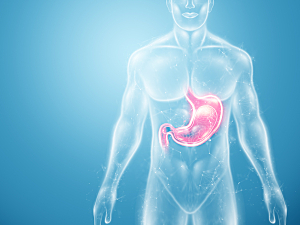Some medical devices are made of “actively triggerable” materials, which break down upon introducing an exogenous stimulus. This allows precise control over the device’s lifetime, including adaptation to circumstances such as changing the treatment plan.
However, most actively triggerable materials are low-strength plastics, which have limited long-term durability when subjected to high mechanical loads in the gastrointestinal tract (e.g., biting and chewing forces, peristalsis). Metal devices tend to be superior in those respects but are designed to passively degrade only under highly specific conditions or require substantial electrical power to drive dissolution.
Giovanni Traverso, MB, BChir, PhD, a gastroenterologist in the Division of Gastroenterology, Hepatology and Endoscopy at Brigham and Women’s Hospital and MIT, Vivian Feig, PhD, a research fellow there, and colleagues addressed those limitations of metals by turning centuries of research on its head. They’re using liquid metal embrittlement, long viewed as a failure mechanism to be avoided, to stimulate on-demand breakdown of solid aluminum. In Advanced Materials, they describe their process and potential biomedical applications.
Eutectic Gallium Indium
Liquid metal embrittlement refers to the penetration of the grain boundaries of certain solid metals by liquid metal. This causes dramatic weakening or disintegration of the solid metal because the liquid destabilizes the cohesion between the grains.
The Brigham researchers and MIT collaborators have been working with eutectic gallium indium (EGaIn), a gallium alloy liquid at room temperature that is known to embrittle aluminum severely. In previous research, EGaIn has been shown to be biocompatible in a range of medical applications, such as skin-integrated electronics and drug delivery.
EGaIn is being used at the Brigham to construct aluminum biomedical devices that withstand significant mechanical loads during their functional lifetime and then are eliminated noninvasively. The aluminum breakdown can be triggered reproducibly by EGaIn within different physiologically relevant environments.
Moreover, the breakdown behavior of aluminum after triggering can be readily tuned by manipulating its grain structure with well-established metal processing techniques.
Some Biomedical Applications
The team has experimented with three potential applications for actively triggerable aluminum:
Staples—The researchers stapled aluminum wire into ex vivo porcine skin tissue and secured them by pinching the two legs inward toward one another. To remove the staples on demand, paintable EGaIn was smeared onto the exposed surface, and after one minute, water was added. After the exterior staple bridge dissolved, the legs could no longer oppose each other, and they were easily removed while wiping away the dissolution products.
Stents fashioned from pure aluminum and placed endoscopically in ex vivo pig esophagus were sufficient to keep the tract open. Once triggered with EGaIn microparticles, the stents disintegrated, and they were easily removed by flushing the esophagus with water (analogous to having patients drink water).
Gastric resident systems have been used for weeks-long health monitoring and drug delivery. Those designed for noninvasive removal rely on passively degrading connectors that break down in a pre-programmed manner into pieces small enough to be eliminated from the gastrointestinal tract. But elimination on demand would be preferable, for example, in the case of an allergic reaction.
The Brigham researchers created a prototype gastric resident device, swallowable by humans in a gelatin capsule, in which polymeric components are linked together by crimping them through aluminum tubes. When placed endoscopically in living pigs’ stomachs in a terminal setting, the devices disassembled within 30 minutes after being triggered with EGaIn microparticles in ethanol.
Future Directions
The kinetics and regions of embrittlement will likely become even more fine-tuned through better control of grain structure and size. Conceivably, then, other metals besides aluminum could be made susceptible to robust embrittlement by biocompatible liquid metals. For example, gallium is known to embrittle zinc, copper, steel, and other metals.
Future triggering strategies might involve:
- Combination approaches, such as using liquid metal embrittlement to amplify heat or light
- Passive pumping, as with capillary action
- Active pumping, as with electronically controlled micropumps
Those methods could initiate embrittlement in hard-to-reach areas of the body, as in the case of gastric resident devices, without requiring direct endoscopic or operational access.
